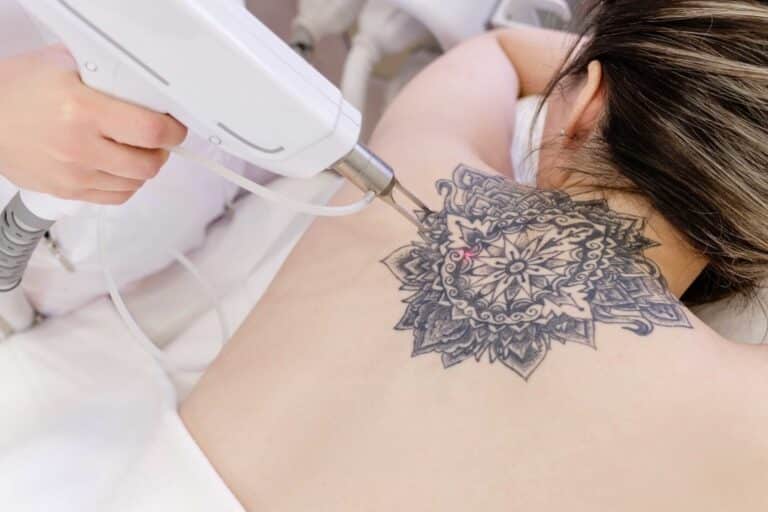Beyond the Ordinary: Transforming Lower Legs with Calf Augmentation
Calf augmentation is a cosmetic procedure that reshapes and enhances the lower legs, offering balance and proportion to the body’s contour. This surgical solution caters to individuals seeking improved leg aesthetics due to personal preference or correcting muscle imbalance caused by physical conditions. With advancements in medical techniques, calf augmentation has become increasingly accessible and customizable, ensuring results that align with patients’ unique physiques and goals.
Understanding the Calf Augmentation Procedure
Procedure Overview
Calf augmentation is a cosmetic procedure. It enhances leg shape and size. People choose this to improve calf muscle appearance. This boosts confidence for many.
There are two main types: fat transfer and implant-based methods. Each has distinct processes and outcomes.
Fat Transfer
Fat transfer uses your body fat for enhancement. Surgeons remove fat from one area, like the abdomen or thighs, then inject it into calves.
This method provides a more natural look but may require touch-ups over time as some of the transferred fat gets reabsorbed by the body.
Implant-Based
Implant-based augmentation involves silicone implants. These are placed under the skin in the calves to create volume and definition that looks similar to toned muscles.
Implants offer a permanent solution compared to fat transfers, which might be absorbed partially by your body over time.
Having realistic expectations is crucial before undergoing calf augmentation.
- Understand both procedures’ benefits.
- Know potential risks.
- Realize individual results vary based on factors like skin quality and overall health.
Surgeons often provide before-and-after photos of past patients so you can gauge possible changes for yourself.
Anatomy and Importance of Calf Muscles
Muscle Identification
The calf area consists primarily of two muscles. The gastrocnemius is the larger muscle, forming the bulge visible beneath the skin. Below it lies the soleus, which is flatter and longer.
These muscles are crucial for movements like walking, running, and jumping. They help propel the body forward and maintain balance. Strong calf muscles also absorb shock when your feet hit the ground.
Aesthetic Role
Calf muscles contribute significantly to leg aesthetics. Well-defined calves can enhance the appearance of your legs, making them look more athletic.
People often seek calf augmentation when they feel their calves are too small. This may be due to genetics or a lack of muscle development from exercise.
Functional Significance
Beyond looks, these muscles play a key role in daily activities. They allow you to stand on tiptoes or climb stairs with ease.
Strong calves also support ankle stability and reduce injury risk during physical activity. They work together with other leg muscles to provide overall strength and function.
Body Symmetry
The size of your calf muscles can impact body symmetry too. For those who have undergone calf augmentation, balanced proportions between upper and lower body parts are important for both form and function.
When one part is out-of-sync with others it can lead not just to aesthetic concerns but potential discomfort or movement issues as well.
Types of Calf Implants and Materials Used
Silicone Gel
Silicone gel implants have a soft, flexible feel. They mimic the natural calf muscle more closely. Patients often choose these for a subtle enhancement. The gel’s consistency is similar to human fat, which can offer a realistic texture.
However, silicone gel carries some risks. If the implant ruptures, the gel may leak into surrounding tissues. This could lead to complications requiring further surgery.
Solid Silicone
Solid silicone implants are firmer than their gel counterparts. They hold shape well under the skin and are less likely to rupture or shift position over time.
These implants are often preferred for their durability and low risk of leakage. Their solid structure means they maintain form even under stress or impact.
Custom Shaping
Custom-shaped implants adapt perfectly to individual leg contours. During consultation, surgeons measure each patient’s legs for tailored fitment.
The advantage here is that custom shaping provides balance where there may be asymmetry between muscles or overall leg shape—resulting in a more natural look.
Material Safety
Different materials come with distinct safety profiles:
- Silicone is biocompatible and rarely causes reactions.
- Other materials might not match silicone’s safety record but could offer unique benefits in certain cases.
It’s crucial patients discuss options with their surgeon to understand risks versus rewards associated with each material type.
Preparing for Calf Augmentation Surgery
Health Assessments
Before calf augmentation surgery, a thorough health check is crucial. Your doctor will order several lab tests to ensure you’re fit for the procedure. These may include blood work and heart function tests.
You must disclose all medical history to your surgeon. They need this information to prevent complications during and after surgery.
Medication Guidelines
Medication adjustments are often necessary before calf augmentations. You might need to stop taking certain drugs, such as blood thinners or supplements that can increase bleeding risk.
Your surgeon will provide a list of medications to avoid before the operation. It’s essential to follow these instructions carefully.
Lifestyle Changes
Lifestyle changes can help improve surgical outcomes. Smokers should quit at least two weeks prior, as smoking can delay healing and increase complication risks.
Healthy eating and staying hydrated are also important pre-surgery steps. They prepare your body for recovery post-operation.
Transportation Planning
After calf augmentation, you won’t be able to drive home due to the effects of general anesthesia. Arrange transportation ahead of time with a friend or family member.
It’s also wise to have someone stay with you on the first night back home in case assistance is needed.
Planning ahead eases stress on surgery day, allowing you focus on recovery rather than logistics.
The Calf Implant Surgical Process
Incision Techniques
After preparing for calf augmentation, the surgical process begins with making incisions. Surgeons follow specific techniques to ensure minimal scarring and proper placement of implants. Typically, incisions are made in the natural creases behind the knee or on the inner side of the leg.
Surgeons carefully create these openings to minimize visible signs of surgery. They use their expertise to prevent complications like infection. These precise incisions allow access to implant sites while preserving surrounding tissues.
Implant Placement
The next step involves placing the calf implants into position. There are two main methods: subfascial and submuscular placement.
- Subfascial placement refers to inserting implants just below the fascia, a fibrous tissue layer.
- Submuscular involves positioning them beneath muscle layers for a more integrated look.
Each method has its benefits depending on desired outcomes and individual patient anatomy.
Surgery Duration
Calf augmentation is not an overly lengthy procedure but requires attention to detail. It typically takes one to two hours under general anesthesia or intravenous sedation.
Patients receive anesthesia tailored to their needs and medical history, ensuring comfort throughout surgery duration. This critical aspect helps manage pain perception during recovery as well.
Recovery and Post-Operative Care for Calf Augmentation
Healing Timeline
After the calf implant surgery, recovery is crucial. Patients often resume light activities within a few days. However, full healing takes longer. The first week post-surgery involves significant rest to aid in recovery.
A typical timeline looks like this:
- Week 1: Light walking encouraged; avoid strain on calves.
- Weeks 2-4: Gradual return to daily routines.
- Month 2 onwards: Resume more strenuous activities as advised by the surgeon.
Patients must follow their doctor’s specific guidance during this period.
Compression Garments
Using compression garments supports recovery after calf augmentation. They help reduce swelling and improve blood circulation, which are essential for healing.
Benefits of wearing these garments include:
- Minimized risk of blood clots.
- Decreased fluid buildup in treated areas.
- Enhanced comfort during movement post-surgery.
It’s important that patients wear them as directed by their healthcare provider.
Complication Signs
While complications are rare, they can occur. Patients should watch for certain signs that indicate a need for immediate medical attention:
Look out for:
- Unusual swelling or pain not relieved by medication.
- Redness or heat around incision sites indicating possible infection.
- Any discharge from incisions could suggest an issue needing prompt care.
If any of these symptoms arise, contacting your surgeon promptly is vital to ensure proper treatment and prevent further issues.
Risks and Long-Term Effects of Calf Implants
Implant Shifting
After recovery from calf augmentation, patients may face issues with implant shifting. Over time, the implants can move from their original position. This could lead to asymmetry between calves.

Patients notice changes in shape or feel unevenness when touching. Regular check-ups can help monitor these shifts. If an implant does shift significantly, additional surgery might be necessary to correct it.
Infection Risk
Another concern is the potential for infection post-surgery. Despite sterile techniques and antibiotics, infections can still occur around calf implants.
Symptoms include redness, swelling, or discharge at the surgical site. Immediate medical attention is crucial to prevent further complications such as implant rejection by the body.
Future Surgeries
Lastly, considering the longevity of calf implants is important:
- They are not always a one-time procedure.
- Future surgeries might be needed either for cosmetic reasons or implant issues.
As bodies age and lifestyles change, so too do aesthetic desires and physical needs which may prompt revision surgeries down the line.
Evaluating the Success and Satisfaction of Calf Augmentation
Aesthetic Outcomes
After calf augmentation, aesthetic improvements are key. Patients often seek a balanced look with increased volume and symmetry. Doctors use before-and-after photos to assess changes.
Patients report feeling more confident when their calves match their body’s proportions. Successful outcomes hinge on realistic expectations set by both patient and surgeon pre-surgery.
Patient Feedback
Patient satisfaction is crucial in evaluating calf augmentation success. High satisfaction rates reflect well on the procedure’s effectiveness. Common feedback includes happiness with the improved contour and how clothes fit better post-augmentation.
Some patients experience complications like seroma or pain, impacting satisfaction levels negatively. However, many express that benefits outweigh these issues over time.
Follow-Up Care
Follow-up consultations are essential for long-term success assessment. They help track healing progression and identify any late-onset complications.
Continued care ensures patients feel supported throughout recovery. It also provides an opportunity for further adjustments if necessary to meet patient expectations fully.
Closing Thoughts
Calf augmentation represents a significant decision for those seeking to enhance the contour and balance of their lower legs. This article has thoroughly explored the procedure, from the anatomy of calf muscles to the intricacies of post-operative care. The potential risks and long-term effects have been presented alongside factors contributing to patient satisfaction, providing a comprehensive guide for individuals contemplating this cosmetic enhancement.
Those considering calf implants are encouraged to weigh the benefits against possible complications, consulting with a board-certified plastic surgeon to ensure personalized advice tailored to their specific needs. As with any surgical intervention, informed decisions are paramount. For further information or to schedule a consultation, prospective patients should reach out to a qualified professional in the field of cosmetic surgery.
Frequently Asked Questions
What is calf augmentation?
Calf augmentation is a cosmetic procedure aimed at enhancing the size and shape of the calves using implants or fat grafting.
Why do people opt for calf implants?
Individuals often choose calf implants to address muscle imbalance, enhance lower leg contour, or improve proportions due to genetic factors or physical conditions.
What materials are used in calf implants?
Calf implants are typically made from silicone, which is durable and designed to mimic the natural feel of muscular tissue.
How should I prepare for a calf augmentation surgery?
Preparation involves consultations with your surgeon, health evaluations, cessation of smoking and certain medications, and arranging for recovery support post-surgery.
Can you describe the surgical process for inserting calf implants?
The surgical process entails creating incisions in the natural creases behind the knees, placing silicone implants over existing muscles, and then closing incisions with sutures.
What does recovery from calf implant surgery involve?
Recovery includes rest with limited movement, managing discomfort with medication as prescribed by your doctor, wearing compression garments if recommended, and gradual return to normal activities following your surgeon’s guidance.
Are there risks associated with calf augmentation?
Risks can include infection, implant displacement or asymmetry between legs. Long-term effects may vary but generally involve maintaining aesthetic improvements while monitoring any changes over time.






